Race Profile: 1915 Vanderbilt Cup Race in San Francisco, California

In 1915 both the Vanderbilt Cup Race and the American Grand Prize were held in conjunction with the Panama-Pacific International Exposition in San Francisco, California. With the changes across the globe and within the sport, the differences between the Vanderbilt Cup Race and the American Grand Prize had narrowed to essentially nothing. While the entries turned out in record numbers – 31 cars would start the Vanderbilt Cup Race – they were largely the same drivers and equipment as had run in the American Grand Prize.
Only three drivers who ran for the Vanderbilt Cup missed the American Grand Prize. The biggest name was Bob Burman, who nearly destroyed his Case racer in the Vanderbilt Cup Race. The other two were T.A. Tomasini who drove his own car, a Tomasini special and Harold Hall in a Hercules special, both non-factory purpose-built race cars.
Indeed, the biggest difference in 1915 was the improved weather and the distance for the Vanderbilt Cup Race. March 6, 1915 dawned bright and dry in San Francisco with a crowd reminiscent of the nostalgic Long Island days – 100,000 strong. Among those was San Francisco Mayor James Rolph, California Governor Hiram Johnson and Willie K’s estranged wife, Virginia.
The shorter course demanded a new process for starting the race as Fred Wagner sent the competitors into battle three at a time at 15 second intervals. Ralph De Palma, at the helm of a temperamental 1913 Mercedes with a persistent and frustrating vibration, led the first lap. His advantage did not last long. Eddie Rickenbacker, no longer promoted as Baron Richenbacher, pushed his Maxwell to the front until a broken fuel line ended his quest on lap 7.
With Rickenbacker’s demise, Tom Alley in the Duesenberg led, followed by Resta, Oldfield and Pullen. By lap 20 Resta was in the lead with Pullen lurking close behind. Pullen, in the Mercer, stirred excitement in the onlookers when he surged past the little-known foreign driver to take the top spot on lap 23.
Resta returned to the front and had a good grip on first place by lap 30. Two minutes behind was “Wild” Bob Burman in his Case with Pullen in third.
The first accident of the race occurred on lap 37 when Alley’s Duesenberg mowed down 150 feet of fencing lining the course. Minutes later his teammate Eddie O’Donnell hit a hay bale and his racer turned on its side. No one was hurt in either incident.
More serious, on lap 40 Harvey “Captain” Kennedy in one of two Edwards Specials lost a wheel and it struck and injured a spectator. Three laps later Burman exited the event in far more spectacular fashion, tumbling his Case racer in front of the palace of machinery.
For Burman, who had survived several spectacular incidents in his career, it was another miraculous escape. In a short while, he and his wife were back at the grandstand watching the race. His riding mechanician, Joe Cleary, was not so fortunate. He suffered fractures of his thigh and two broken ribs. Burman’s luck would soon run out. He lost his life in a vicious crash at the Corona, California road race little more than a month later.
Harry Grant’s exit from the race was every bit as frustrating as Burman’s was spectacular. On lap 50, during a pit stop for fuel, a crew member mistakenly poured water into his gas tank.
The Mercers, in the hands of Pullen and his teammate, Glover Ruckstall, dogged Resta through lap 72. At that point, just 5 laps from the end, the unfortunate Ruckstall broke an axle. Misfortune struck the Mercer team a second time when Pullen, running solidly in second, had to pit to secure his gas tank that had worked loose during the thumping ride.
The delay was the opening Howdy Wilcox needed to steal second place with his white Stutz. Wilcox had brought the same car home in second behind Resta in the American Grand Prize just one week before. With a margin of 7 minutes, 29 seconds, Resta bested Wilcox again to win his second major American auto race in a week. Pullen and the Mercer were third and a steady drive by De Palma earned him fourth.
Resta and his Peugeot covered the distance in 4 hours, 27 minutes and 37 seconds at an average speed of 66.25 miles per hour. He was awarded $3,000 plus accessory prizes such as $400 from Bosch for his efforts. Wilcox won $2,000.
Dario Resta had introduced himself to America in a dramatic and convincing fashion. In other circumstances, his future would appear exceptionally bright. But the racing community left the surreal backdrop of exposition pavilions with anything but a sense of certainty. Unprecedented violence was spreading worldwide and their sport, their livelihood, faced inexorable change.
Enjoy,
Howard Kroplick
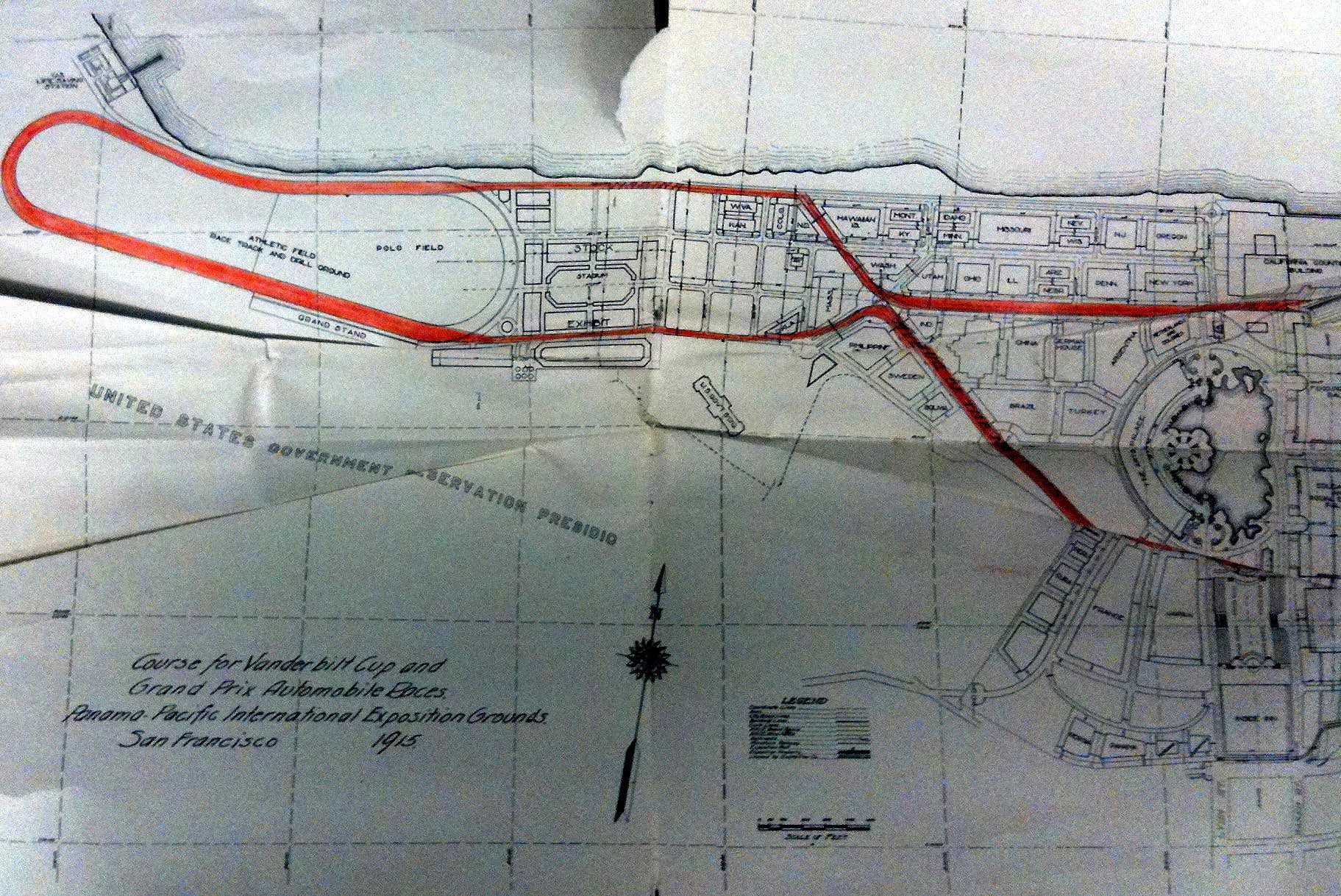
The west section of the course.
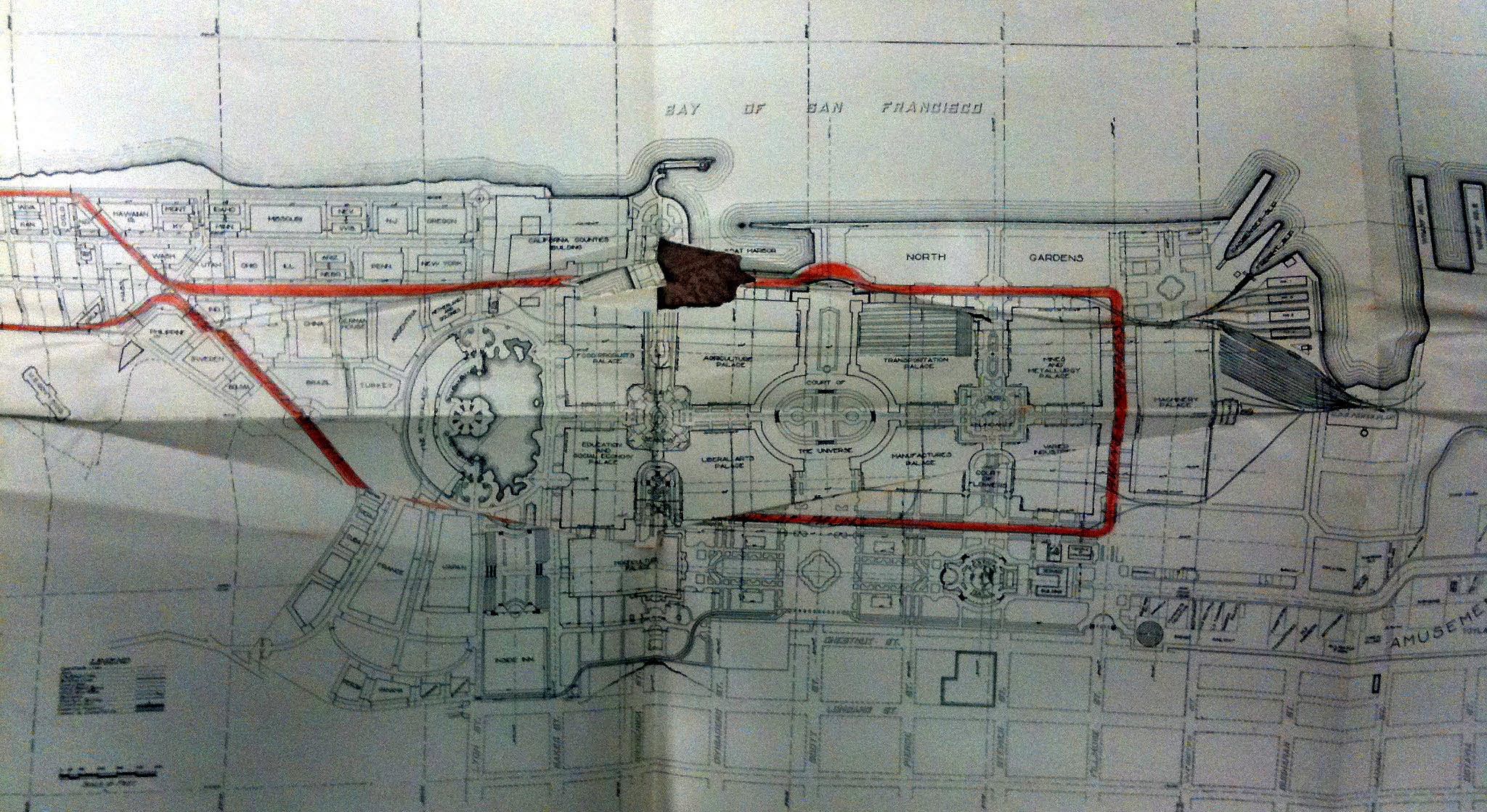
The east section of the course.
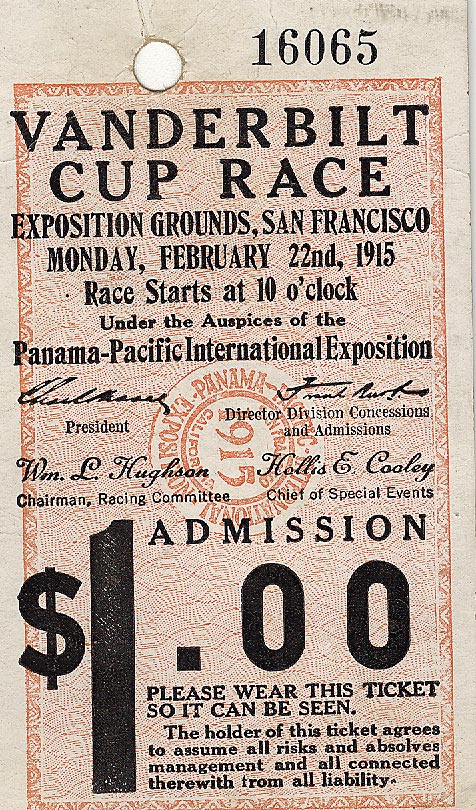
A $1.00 ticket to the race.
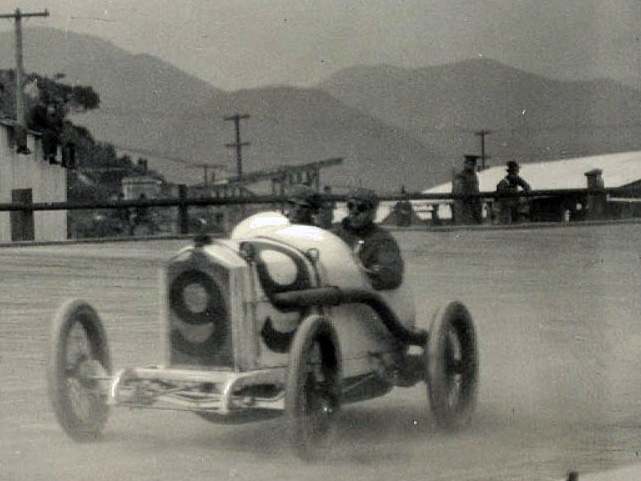
Dario Resta in his winning Peugeot.
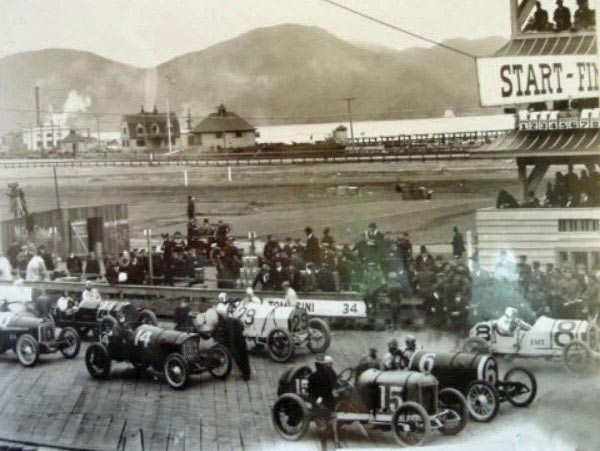
At the 1915 grandstand. The #8 Stutz was driven by Harry Grant, winner of the 1909 and 1910 Vanderbilt Cup Races.
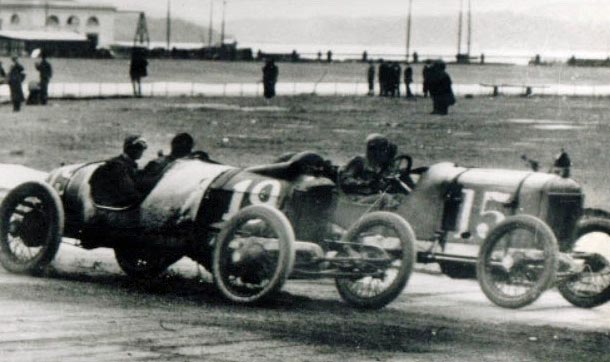
The #15 Delage driven by Claude Newhouse leading Eddie O'Donnell's#19 Duesenberg.







Comments
Great item, Howard. BTW-The Revs Institute has a marvelous collection of photographs of this race. I will try and share a few of these with you.